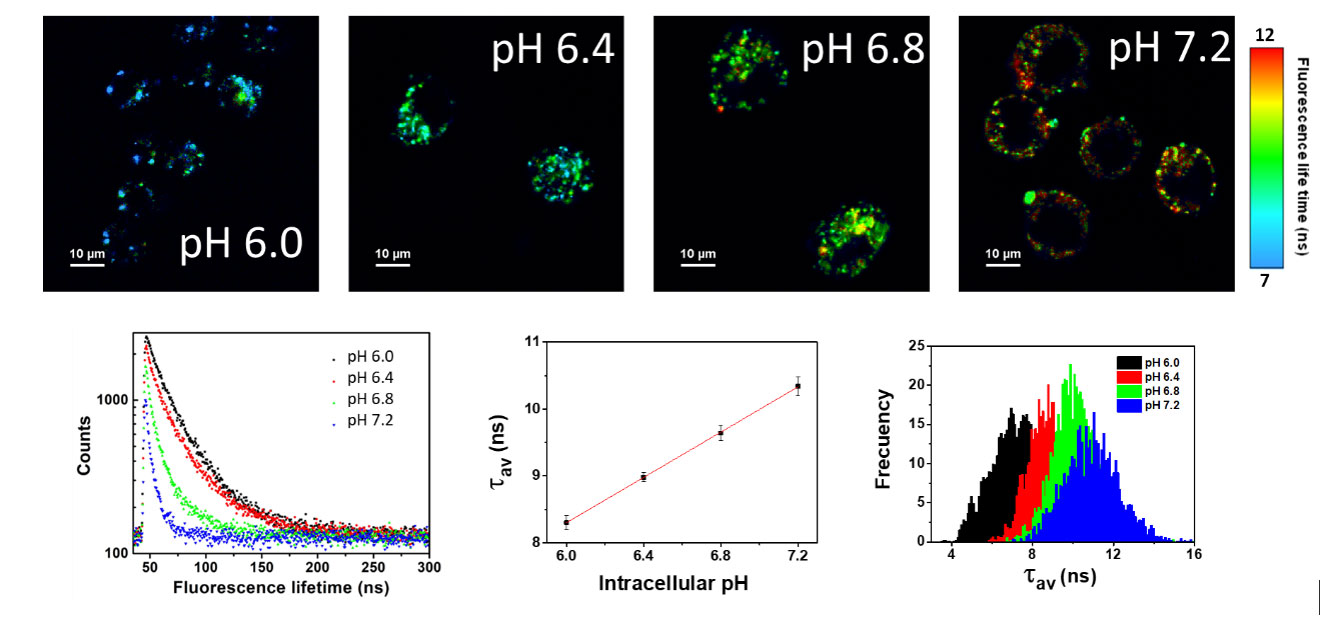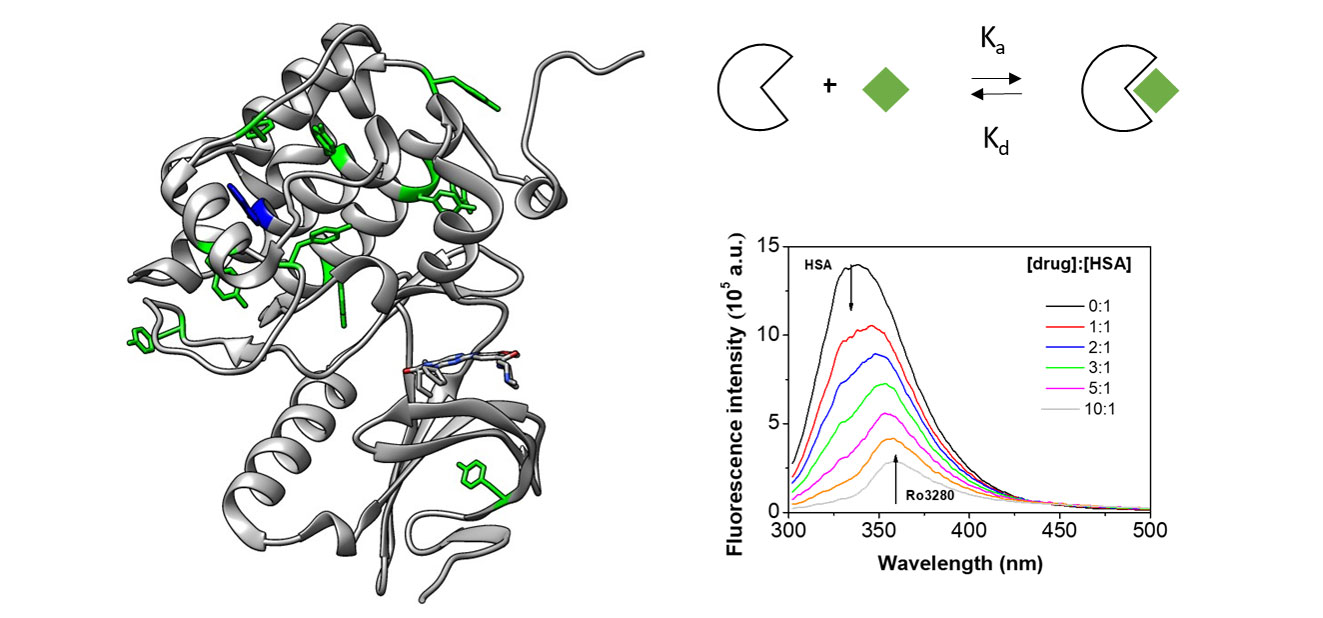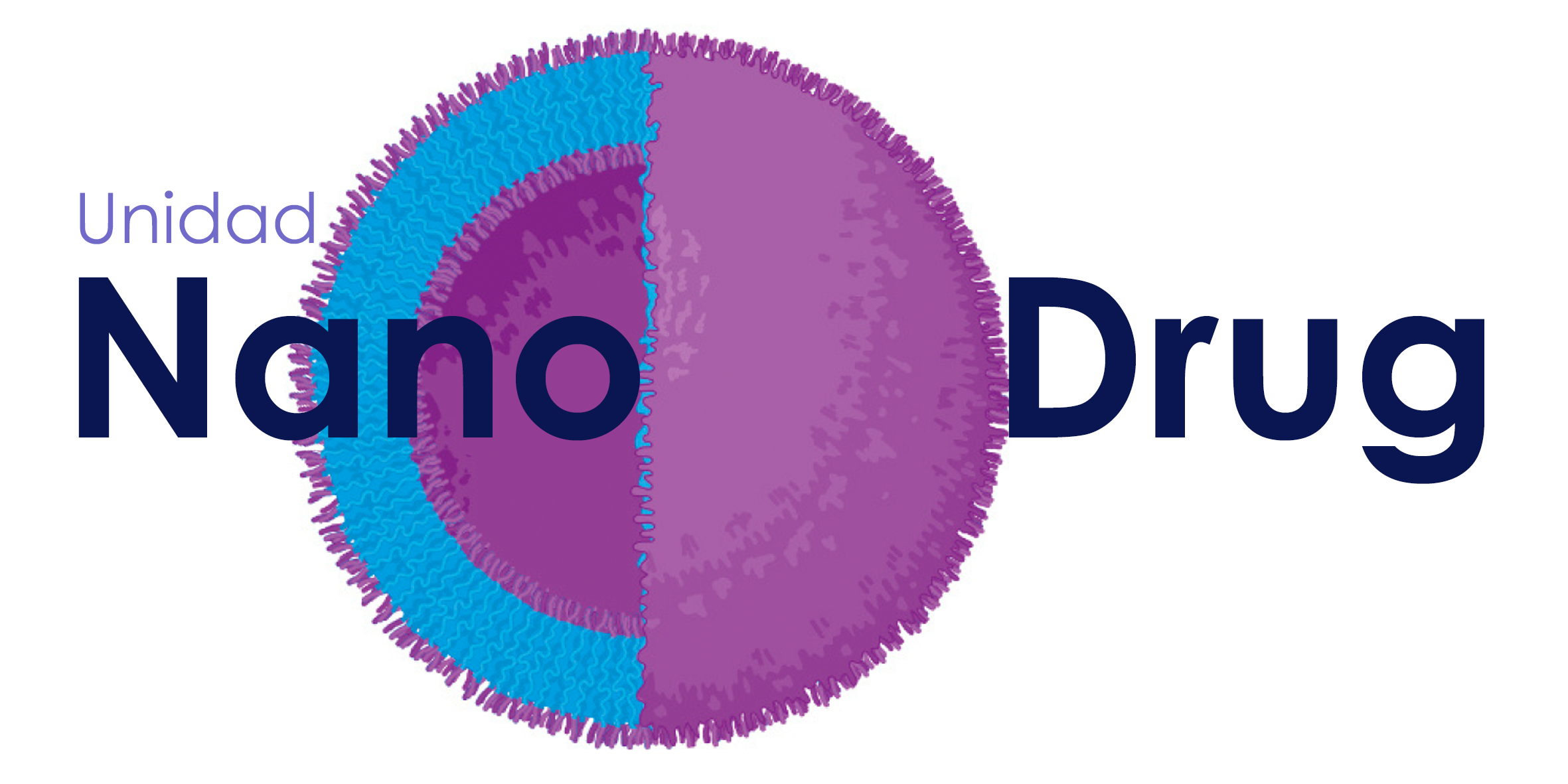Biophotophysics: probes and drugs
Research leaders: Carlos Alonso-Moreno/Iván Bravo
Fluorescence lifetime probes offer great advantages over conventional fluorescent probes, in which the response to a stimulus is correlated with the intensity of fluorescence emitted by the probe. Fluorescence lifetime is also sensitive to a wide variety of stimuli (analyte concentration, pH, temperature, viscosity, pressure, etc.) but is independent to the concentration of the probe. This is of great interest in the study of complex samples such as cells and tissues. We are working on the development of nanoprobes based on quantum dots functionalized with peptides and amino acids to determine intracellular and mitochondrial pH, as well as to monitor the effect of drugs and toxic substances on the cellular state using a Fluorescence Lifetime Imaging Microscope (FLIM). We are also interested in the development of fluorescence lifetime probes of the endoplasmic reticulum stress based on BODIPY derivatives. Some fluorophores can also be highly sensitive to temperature. We are also studying the use of fluorescence lifetime probes as molecular thermometers.

Fluorescence spectroscopy can be also used to study the interactions between drugs and proteins, allowing the determination of parameters such as the affinity constant, number of binding sites and thermodynamic parameters. We are particularly interested in studying the interactions between therapeutic kinase targets and antitumor drugs in different phases of clinical. We also study the interactions of drugs with the carrier protein HSA, with the aim of obtaining useful information on the biodistribution and pharmacokinetics of these substances.

For more information, check some of our publications
Functionalized CdSe/ZnS Quantum Dots for Intracellular pH Measurements by Fluorescence Lifetime Imaging Microscopy
Pacheco-Liñán PJ, Bravo I, Nueda ML, Albaladejo J, Garzón-Ruiz A. ACS Sens. 2020 Jul 24;5(7):2106-2117. https://doi.org/10.1021/acssensors.0c00719
Novel Fluorescence Guanidine Molecules for Selective Sulfate Anion Detection in Water Complex Samples over a Wide pH Range
Pacheco-Liñán PJ, Alonso-Moreno C, Carrillo-Hermosilla F, Garzón-Ruiz A, Martín C, Sáez C, Albaladejo J, Bravo I. ACS Sens. 2021 Sep 24;6(9):3224-3233 https://doi.org/10.1021/acssensors.1c00876
A Novel Quantum Dot-Based pH Probe for Long-Term Fluorescence Lifetime Imaging Microscopy Experiments in Living Cells
Herrera-Ochoa D, Pacheco-Liñán PJ, Bravo I, Garzón-Ruiz A. ACS Appl Mater Interfaces. 2022 Jan 19;14(2):2578-2586. https://doi.org/10.1021/acsami.1c19926
Intramolecular charge transfer and molecular flexibility: Key parameters to be considered in the design of highly fluorescent p-phenylene vinylene derivatives
Pedro J. Pacheco-Liñán, Amparo Navarro, Juan Tolosa, Mónica Moral, Cristina Martín, Iván Bravo, Johan Hofkens, Joaquín C. García-Martínez, Andrés Garzón-Ruiz Dyes and Pigments, Volume 199, March 2022, 110105 https://doi.org/10.1016/j.dyepig.2022.110105
Formation of Highly Emissive Anthracene Excimers for Aggregation-Induced Emission/Self-Assembly Directed (Bio)imaging
Pacheco-Liñán PJ, Alonso-Moreno C, Ocaña A, Ripoll C, García-Gil E, Garzón-Ruíz A, Herrera-Ochoa D, Blas-Gómez S, Cohen B, Bravo I ACS Appl Mater Interfaces. 2023 Sep 27;15(38):44786-44795. doi: 10.1021/acsami.3c10823.
Unexpected luminescence of non-conjugated biomass-based polymers: new approach in photothermal imaging
de la Cruz-Martínez F, Bresolí-Obach R, Bravo I, Alonso-Moreno C, Hermida-Merino D, Hofkens J, Lara-Sánchez A, Castro-Osma JA, Martín C J Mater Chem B. 2023 Jan 4;11(2):316-324. PMID: 36353924. doi: 10.1039/d2tb02033e.
A Fluorescent Probe for Protein Misfolding and Aggregation Due to Oxidative Stress Based on a 7-Azaindole-BODIPY Derivative
Herrera-Ochoa D, Llano I, Ripoll C, Cybulski P, Kreuzer M, Rocha S, et al. ChemRxiv. 2024; doi:10.26434/chemrxiv-2024-94b66
Shedding light on the binding mechanism of kinase inhibitors BI-2536, Volasetib and Ro-3280 with their pharmacological target PLK1
Fernández-Sainz, P.J. Pacheco-Liñán, J.M. Granadino-Roldán, I. Bravo, J. Rubio-Martínez, J. Albaladejo, A. Garzón-Ruiz. J. Photochem. & Photobiol. B 2022, 232, 112477. https://doi.org/10.1016/j.jphotobiol.2022.112477
A Novel Quantum Dot-Based pH Probe for Long-Term Fluorescence Lifetime Imaging Microscopy Experiments in Living Cells
Herrera-Ochoa, P.J. Pacheco-Liñán, I. Bravo, A. Garzón-Ruiz. ACS Appl. Mater. Interfaces 2022, 14, 2578−2586. https://doi.org/10.1021/acsami.1c19926
